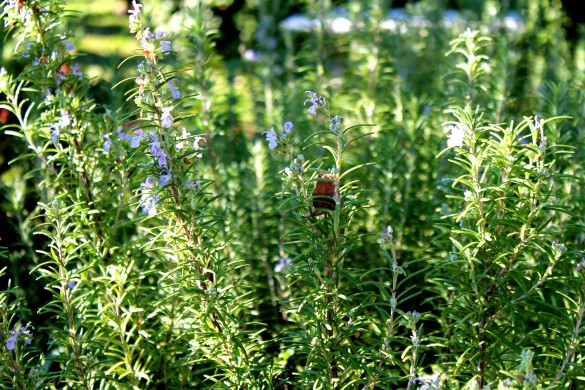Written by Matthew Patterson, Visitor Services Associate

Rosemary is a woody, perennial herb with fragrant, evergreen, needle-like leaves and white, pink, purple or blue flowers, native to the Mediterranean region. The name “rosemary” derives from the Latin name rosmarinus, derived from “dew” (ros) and “sea” (marinus), or “dew of the sea”. According to legend, it was draped around the Greek goddess Aphrodite when she rose from the sea.

Rosemary grows in many locations since it needs no water other than the humidity carried by the sea breeze to live. And since it is attractive and drought tolerant, Rosemary is used as an ornamental plant in gardens and for xeriscape landscaping, especially in regions of Mediterranean climate. It is considered easy to grow and pest-resistant, can grow quite large and retain attractiveness for many years, can be pruned into formal shapes and low hedges and has been used for topiary.
Besides the well-known culinary uses for Rosemary it has also been associated with improved memory; even being cited in Shakespeare’s Hamlet for this very attribute. Modern studies in fact have shown this idea to have some credence in that rosemary produced a significant enhancement of performance for overall quality of memory and secondary memory factors, but also produced an impairment of speed of memory compared to controls.


